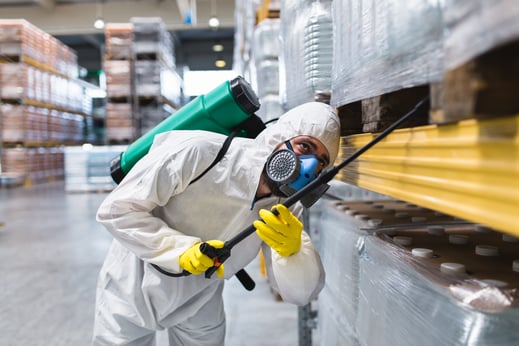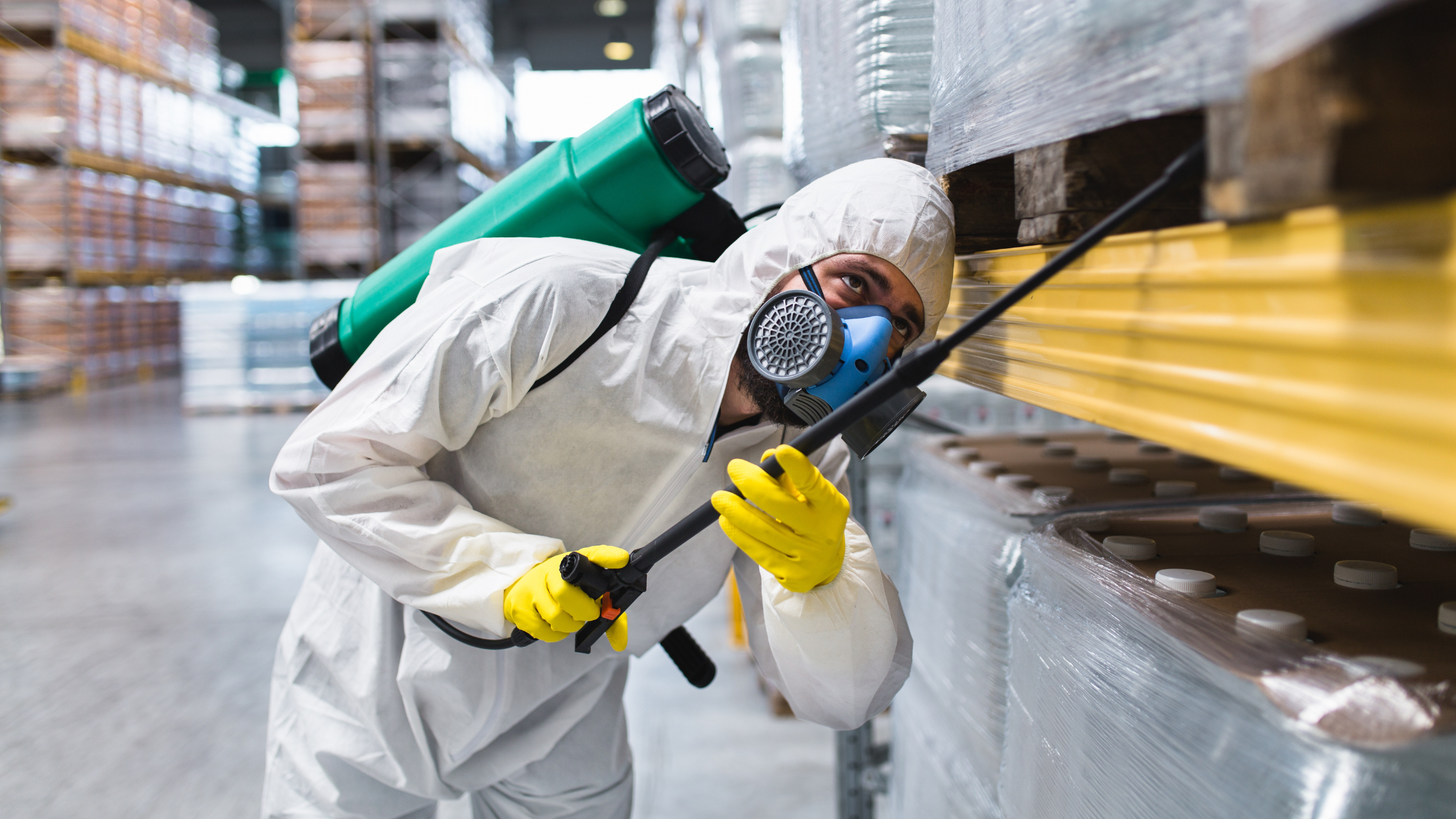Within the bustling world of EHS (Environment, Health, and Safety), a crucial realm exists where science meets well-being: industrial hygiene.
Often shrouded in technical jargon and unseen hazards, this field plays a vital role in safeguarding the health and productivity of workers in countless industries. So, let’s embark on a journey to unpack the fascinating landscape of industrial hygiene and understand how it contributes to a safer, healthier workplace.
Unveiling the Invisible Threats
Industrial hygiene professionals, akin to environmental detectives, delve into the unseen. They study, evaluate, and control workplace exposures – the physical, chemical, and biological agents that can impact workers’ health. From the microscopic dust particles in a construction site to the noxious fumes in a welding workshop, understanding and managing these exposures is the crux of industrial hygiene.
But how does this translate into actual workplace safety? Industrial hygiene champions a four-pronged approach:
- Anticipation: Proactive identification of potential hazards through workplace assessments, monitoring equipment, and analyzing data.
- Recognition and Evaluation: Accurately measuring and assessing the levels of hazardous exposures to understand their potential risks.
- Control: Implementing strategies to minimize or eliminate exposures, like ventilation systems, engineering controls, or personal protective equipment (PPE).
- Administrative Practices: Educating workers, establishing safe work procedures, and maintaining medical surveillance programs.

The Ripple Effect of Safety
While the primary focus of industrial hygiene lies within the four walls of a workplace, its positive impact ripples outwards, creating a cascading effect that reaches far beyond the physical boundaries of the job site. Let’s dive deeper into this multifaceted ripple effect to understand how strong industrial hygiene practices impact individuals, businesses, and society as a whole.
For the Individual
Industrial hygiene practices have an obvious impact on individual workers and other stakeholders that interact with these practices as a matter of course. These benefits include:
- Enhanced Physical and Mental Well-being: Mitigating exposure to harmful substances prevents illness, injuries, and chronic health conditions, significantly improving workers’ physical well-being. Additionally, a safe and healthy work environment reduces stress and anxiety, fostering a positive mental state.
- Increased Job Satisfaction and Engagement: Feeling protected and valued translates to higher job satisfaction, boosting employee morale and engagement. This leads to improved productivity, reduced absenteeism, and a more dedicated workforce.
- Financial Security and Stability: Avoiding illnesses and injuries minimizes medical expenses and lost wages, ensuring financial security for workers and their families. This improves overall quality of life and reduces dependence on social safety nets.
For the Business
Businesses and organizations are more than the sum of their parts; they’re entities in their own right. Strong industrial hygiene practices do more than protect workers but the entirety of the business as well in the following ways:
- Reduced Costs and Enhanced Profitability: Strong industrial hygiene practices lead to fewer workplace accidents, illnesses, and legal liabilities, lowering operational costs and boosting profitability.
- Improved Efficiency and Productivity: A healthy workforce experiences less downtime due to illness or injury, leading to increased efficiency and production output. This directly translates to greater revenue and market competitiveness.
- Strengthened Brand Reputation and Attracting Talent: Prioritizing worker safety fosters a positive company image, attracting top talent and retaining high-performing employees. This enhances brand reputation within the community and boosts customer loyalty.
For Society as a Whole
Civic sustainability is one of the key factors of success in the 21st century, and this will continue to be true going forward. Industrial hygiene plays a major role in positive contributions to sustainability in the following ways:
- Reduced Burden on Healthcare Systems: By preventing occupational illnesses and injuries, strong industrial hygiene practices decrease the burden on healthcare systems, freeing up resources for other needs.
- Healthy and Productive Workforce: A healthy workforce contributes to a productive and thriving economy, benefiting society as a whole.
- Increased Civic Engagement and Community Well-being: Safe and healthy working conditions empower employees to actively participate in civic life and contribute to their communities, leading to a stronger and more resilient society.
Beyond Compliance, Beyond Paperwork
The ripple effect of strong industrial hygiene extends far beyond mere compliance with regulations or ticking boxes on paper forms. It’s about building a culture of safety and well-being that transcends the workplace and impacts individuals, businesses, and society in profound ways. By embracing innovative technologies, data-driven insights, and proactive risk mitigation strategies, industrial hygiene professionals can become powerful catalysts for positive change, creating a ripple effect of safety that reaches far beyond the factory floor and makes a lasting difference in the world.
Bringing Industrial Hygiene into the Digital Age
Industrial hygiene remains a crucial practice in the EHS realm, but manual processes and paper workflows can hinder its effectiveness. Modern safety management software platforms are transforming the landscape, offering powerful tools to support and enhance industrial hygiene practices. Here’s how:
Proactive Hazard Identification and Monitoring
EHS software can help pivot industrial hygiene away from a reactive model into a proactive one. This is accomplished by leveraging the following features:
- Hazard Surveys and Assessments: Streamline hazard identification with digital survey tools and risk matrices, pinpointing potential exposures before they pose threats.
- Predictive Analytics: Leverage intelligent algorithms to analyze historical data and predict potential hazard occurrences, prompting preventive measures and ensuring proactive risk mitigation.
Streamlined Exposure Management and Control
Industrial hygiene practices need to be easy to implement, monitor, and control. EHS software platforms facilitate this through the following methodologies:
- Exposure Tracking and Reporting: Employees can easily log exposures through mobile apps or dedicated terminals, creating a centralized database for analysis and trend identification.
- Digital Management of Safety Data Sheets (SDS): House readily accessible SDS for all chemicals and hazardous materials, facilitating proper handling and control protocols.
- Interactive Hazard Communication: Allow for the creation and sharing of digital safety protocols, training materials, and risk assessments, ensuring everyone has access to critical information easily.
Empowering Informed Decision-making
Business organizations need all the information and knowledge necessary to make smart decisions about their industrial hygiene practices. Safety management software solutions offer various tools to achieve this goal, including:
- Data Visualization and Reporting: Transform complex data into interactive dashboards and reports, enabling clear visualization of trends, patterns, and areas requiring improvement.
- Customizable Alerts and Notifications: Real-time alerts and notifications inform both workers and safety personnel about potentially unsafe conditions, allowing for immediate action and risk mitigation.
- Improved Communication and Collaboration: The platform facilitates seamless communication between industrial hygienists, safety managers, and workers, fostering collaboration and shared accountability for workplace safety.
Building a Culture of Safety and Well-being
Employees are one of the biggest and most important aspects of any industrial hygiene plan. Safety management platforms help get employees on board by offering unique capabilities such as:
- Gamified Training and Education: Gamifies safety training modules, making them engaging and interactive, encouraging continuous learning and knowledge retention.
- Employee Engagement and Ownership: Workers can actively participate in reporting hazards, sharing feedback, and suggesting improvements, boosting their sense of ownership and responsibility for a safe environment.
- Integration with Wellness Programs: Integrate with wellness initiatives, promoting overall worker well-being and highlighting the connection between workplace safety and personal health.

Making Processes More Organic
By empowering industrial hygienists with data-driven insights, real-time monitoring, and streamlined workflows, EHS software enables them to:
- Focus on strategic initiatives: Shift from reactive firefighting to proactive prevention, tackling root causes of hazards and minimizing risks.
- Optimize resource allocation: Prioritize interventions based on real-time data and predictive analytics, maximizing the impact of their efforts.
- Demonstrate compliance and effectiveness: Comprehensive data collection and reporting provide tangible evidence of safety efforts and adherence to regulations.
Ultimately, EHS software can revolutionize industrial hygiene by transforming it into a proactive, data-driven, and collaborative endeavor, fostering a safer and healthier work environment for every employee.
Embracing the Future of Industrial Hygiene
The world of industrial hygiene is constantly evolving, embracing technological advancements and innovative solutions. From real-time exposure monitoring sensors to wearable devices measuring worker fatigue, technology is revolutionizing the way we assess and manage workplace hazards. This, coupled with ongoing research and collaboration between EHS professionals, policymakers, and worker organizations, paves the way for a future where workplaces are even safer and healthier.
Clearing the air on industrial hygiene reveals a complex yet vital field that silently safeguards the health and well-being of millions. By understanding its principles, appreciating its impact, and embracing its constant evolution, we can navigate the intricate landscape of EHS and ensure that every worker returns home safely each day.

